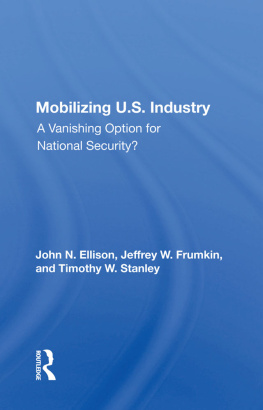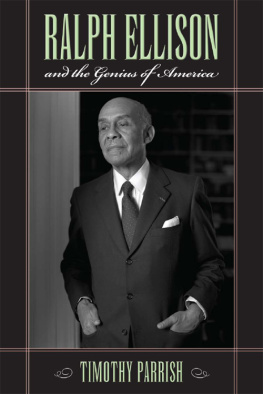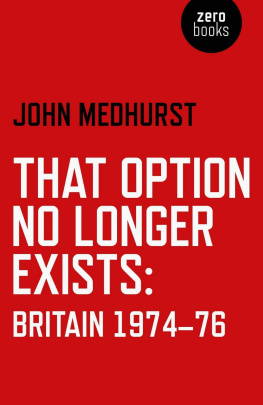John N. Ellison - Mobilizing U.S. Industry: A Vanishing Option for National Security?
Here you can read online John N. Ellison - Mobilizing U.S. Industry: A Vanishing Option for National Security? full text of the book (entire story) in english for free. Download pdf and epub, get meaning, cover and reviews about this ebook. year: 1987, publisher: Routledge, genre: Politics. Description of the work, (preface) as well as reviews are available. Best literature library LitArk.com created for fans of good reading and offers a wide selection of genres:
Romance novel
Science fiction
Adventure
Detective
Science
History
Home and family
Prose
Art
Politics
Computer
Non-fiction
Religion
Business
Children
Humor
Choose a favorite category and find really read worthwhile books. Enjoy immersion in the world of imagination, feel the emotions of the characters or learn something new for yourself, make an fascinating discovery.
- Book:Mobilizing U.S. Industry: A Vanishing Option for National Security?
- Author:
- Publisher:Routledge
- Genre:
- Year:1987
- Rating:3 / 5
- Favourites:Add to favourites
- Your mark:
- 60
- 1
- 2
- 3
- 4
- 5
Mobilizing U.S. Industry: A Vanishing Option for National Security?: summary, description and annotation
We offer to read an annotation, description, summary or preface (depends on what the author of the book "Mobilizing U.S. Industry: A Vanishing Option for National Security?" wrote himself). If you haven't found the necessary information about the book — write in the comments, we will try to find it.
John N. Ellison: author's other books
Who wrote Mobilizing U.S. Industry: A Vanishing Option for National Security?? Find out the surname, the name of the author of the book and a list of all author's works by series.
Mobilizing U.S. Industry: A Vanishing Option for National Security? — read online for free the complete book (whole text) full work
Below is the text of the book, divided by pages. System saving the place of the last page read, allows you to conveniently read the book "Mobilizing U.S. Industry: A Vanishing Option for National Security?" online for free, without having to search again every time where you left off. Put a bookmark, and you can go to the page where you finished reading at any time.
Font size:
Interval:
Bookmark:


605 Third Avenue, New York, NY 10017
2 Park Square, Milton Park, Abingdon, Oxon OX14 4RN
Product or corporate names may be trademarks or registered trademarks, and are used only for identification and explanation without intent to infringe
Mobilizing U.S. industry.
(Studies in American business and the international economy)
Bibliography: p.
Includes index.
1. Industrial mobilization--United States. 2. Munitions--United States. 3. United StatesDefenses. 4. United States--Military policy. I. Ellison, John N. II. Frumkin, Jeffrey W. III. Stanley, Timothy W. IV. Series.
ISBN 0-8133-7573-8
ISBN 13: 978-0-3671-6202-3 (pbk)
- II. The Relevance of the U.S. Industrial Base and Mobilization Capacity
- III. Where the U.S. Stands Today: Key Sectors and Case Studies
- A. Raw Materials
- . Petroleum and Energy
- C. Ferroalloys
- D. Machine Tools
- E. Semiconductors
- Case Study Conclusions
- IV. Alerting National Security Policy Makers to Economic Industrial Problems
- V. Economic Policy Options: Domestic and International
- VI. Conclusions and Recommendations
- ii
Font size:
Interval:
Bookmark:
Similar books «Mobilizing U.S. Industry: A Vanishing Option for National Security?»
Look at similar books to Mobilizing U.S. Industry: A Vanishing Option for National Security?. We have selected literature similar in name and meaning in the hope of providing readers with more options to find new, interesting, not yet read works.
Discussion, reviews of the book Mobilizing U.S. Industry: A Vanishing Option for National Security? and just readers' own opinions. Leave your comments, write what you think about the work, its meaning or the main characters. Specify what exactly you liked and what you didn't like, and why you think so.








